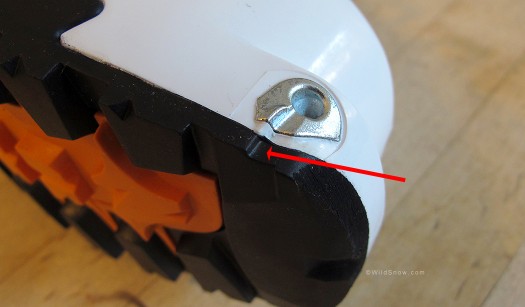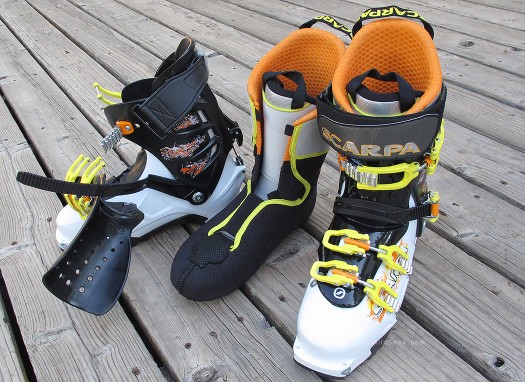
Maestrale RS is essentially the same design as former Maestrale with nicer detailing and stiffer plastic. It includes the excellent walk mode flex that the original is known for. It deliversn impressive uphill performance for a backcountry skiing boot that feels this beefy.
Every winter I set up a few test rigs for resort and sidecountry. I like the craftsmanship of the Scarpa Maestrale so that’ll be one of the boot choices. Our previous looks and reviews have covered the RS. Following are a few photos of what caught my recent attention.
In my view, weight is one of the main criteria with this category of boots, as at least in my case they will still be used for human powered uphill. This pair of size 28 (BSL 314) weigh 55.7 ounces (1600 gr) per boot. Shell weight is 47.3 oz (1340 gr). Considering the original Maestrale weighs in on our scale at 1590 gr., that’s impressive for the RS, since it indeed has noticeable beef compared to the older Maestrale. Added stiffness is the result of stiffer plastic, a beefy tongue, and an engineered liner. In my case the added beef isn’t necessary, but since it doesn’t add weight I look forward to working with it.
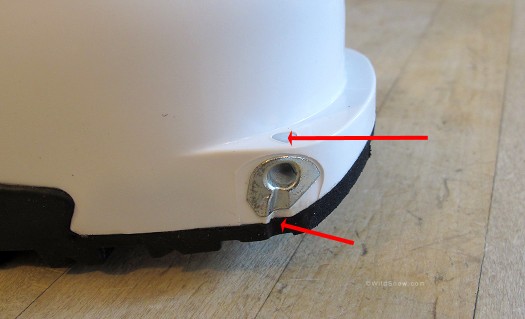
Check out the attention given to the tech fitting in the toe of this impressive ski mountaineering and sidecountry boot. The 'Quick Step In' fitting by Dyanfit assures you're getting the best fittings available -- ones that release as they should and have the correct metalurgy for this critical interface. Added value is the nearly invisible craft detail of continuing the step notch down through the sole rubber, as indicated in photo. Downside of the 'Quick Step' fitting is it allows even less room for sole rubber, so the type of sole material used is crucial. Scarpa's choice appears to be a rubber that's grippy but not too prone to shredding. Note this lack of sole rubber thickness is an inherent weakness of the present tech binding system -- another reason we need an upgrade to this decades old interface. Also note the indicator dot above the fitting to help you line up your boots for the step-in. The marketing slogan for this system is 'Step in Blind' so it always makes me laugh when visual indicators are used. In reality, getting in and out of tech bindings is something that can always use some help -- both the Quick Step In and visual aids.
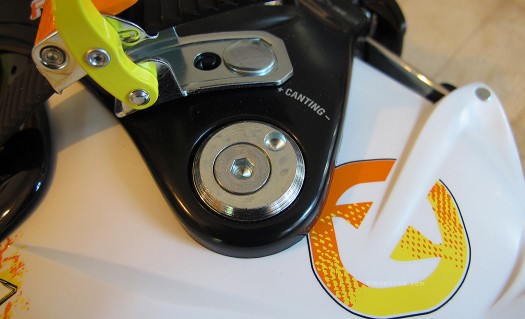
Cuff alignment is provided, and the opposite cuff fastener is also removable. Those features are important. Many people need cuff alignment, and with both pivot fasteners being removable the entire cuff can be taken off the boot for easy modifications. We love this feature.
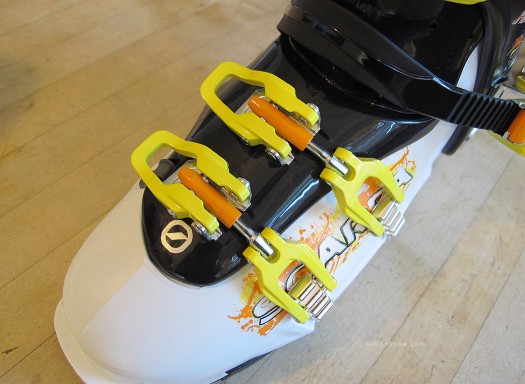
The large and closely spaced buckles of the lower pair appear a bit redundant. For many skiers, one would suffice. But two look good on the tram and cranking them both down does provide that extra bit of beef.
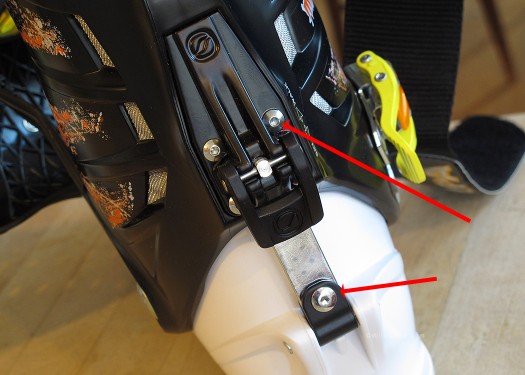
Lean lock bar is beautiful. Totally accessible and easily repaired or modified by virtue of threaded fasteners. It is costly and fiddly during manufacturing to use small threaded fasteners such as these (as opposed to rivets), so kudos to Scarpa for continuing to do so.
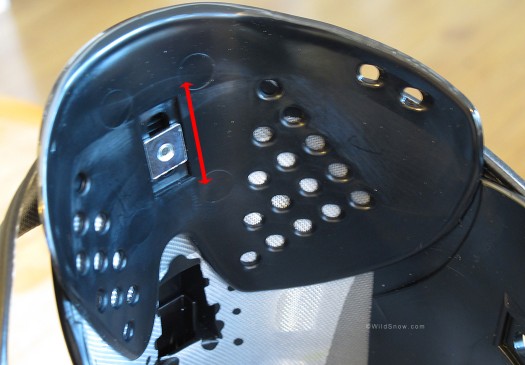
Per a high quality boot with downhill features, the spoiler is height adjustable and easily removed.
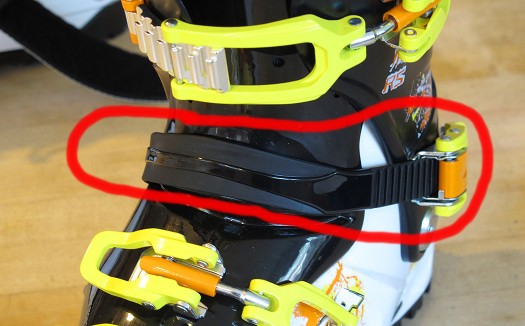
Other boot makers claim they can't place the middle buckle and strap directly over the instep, due to the 'sensitivity of the foot in that area.' Scarpa goes ahead and does so, and it works. In fact, this is our favorite buckle configuration and one of the big reasons we get good performance out of most Scarpa ski boots. Along those lines, one of the big problems with fitting Scarpas over the years has been the exaggerated arch bump in the footboard area of the shell (felt like standing on a baseball). We're delighted to say that in this iteration of Scarpa lasting, the infamous 'Scarpa bump' is nearly gone.
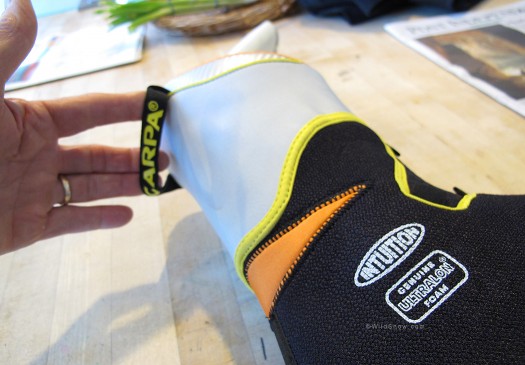
Maestrale liner is sourced from Intuition, but obviously specially made to Scarpa specs. I'll say I'm as impressed by the liners as I am by the boot shell. They're quite obviously so much more than a floppy sock of ensolite foam. The cuff area is quite dense, as is the tongue, while the lower foot area appears to be a perfect compromise between density and comfort. Only concern is this liner has the pesky thin layer of soft interior foam we suspect is intended only to make the boot feel better during shop floor try-ons. In our view, this little layer of foam makes the boot seem to loosen up in fit after a few hours of real-world use. We'd rather it wasn't there. Solution is to be sure and mold without a sock, use only a thin nylon stocking.
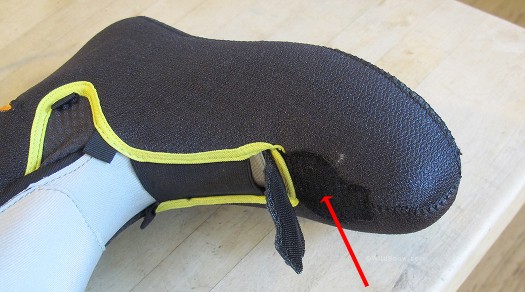
Intuition includes this velcro removable tongue feature on some liners. In the past it created a bump that sometimes messed with boot fitting success; new version uses a thinner velcro, no bump. Nicely done.
In all, Maestrale RS is an impressive offering from Scarpa. I look forward to their place of honor in this winter’s backcountry skiing boot quiver!
Maestrale RS will be available for shopping soon, check for them here at backcountry.com, or at REI. Note that the original Maestrale, while slightly less stiff, could be a real buy and even weighs a few grams less. Personally, I’d be happy with either boot.
WildSnow.com publisher emeritus and founder Lou (Louis Dawson) has a 50+ years career in climbing, backcountry skiing and ski mountaineering. He was the first person in history to ski down all 54 Colorado 14,000-foot peaks, has authored numerous books about about backcountry skiing, and has skied from the summit of Denali in Alaska, North America’s highest mountain.

